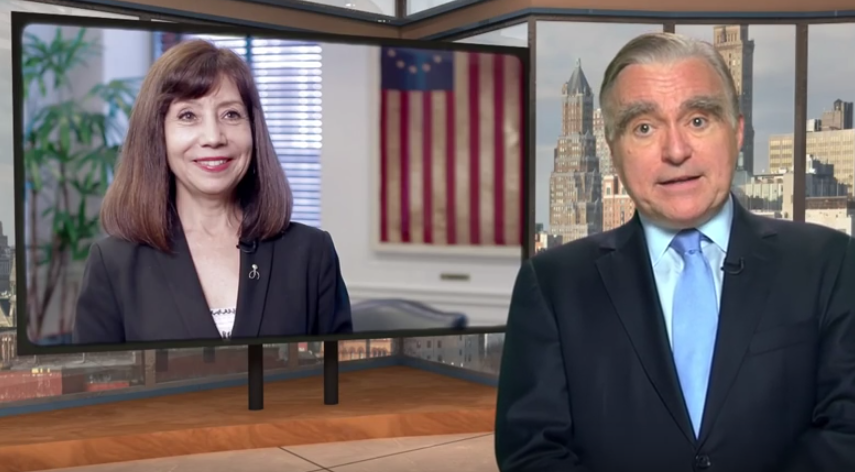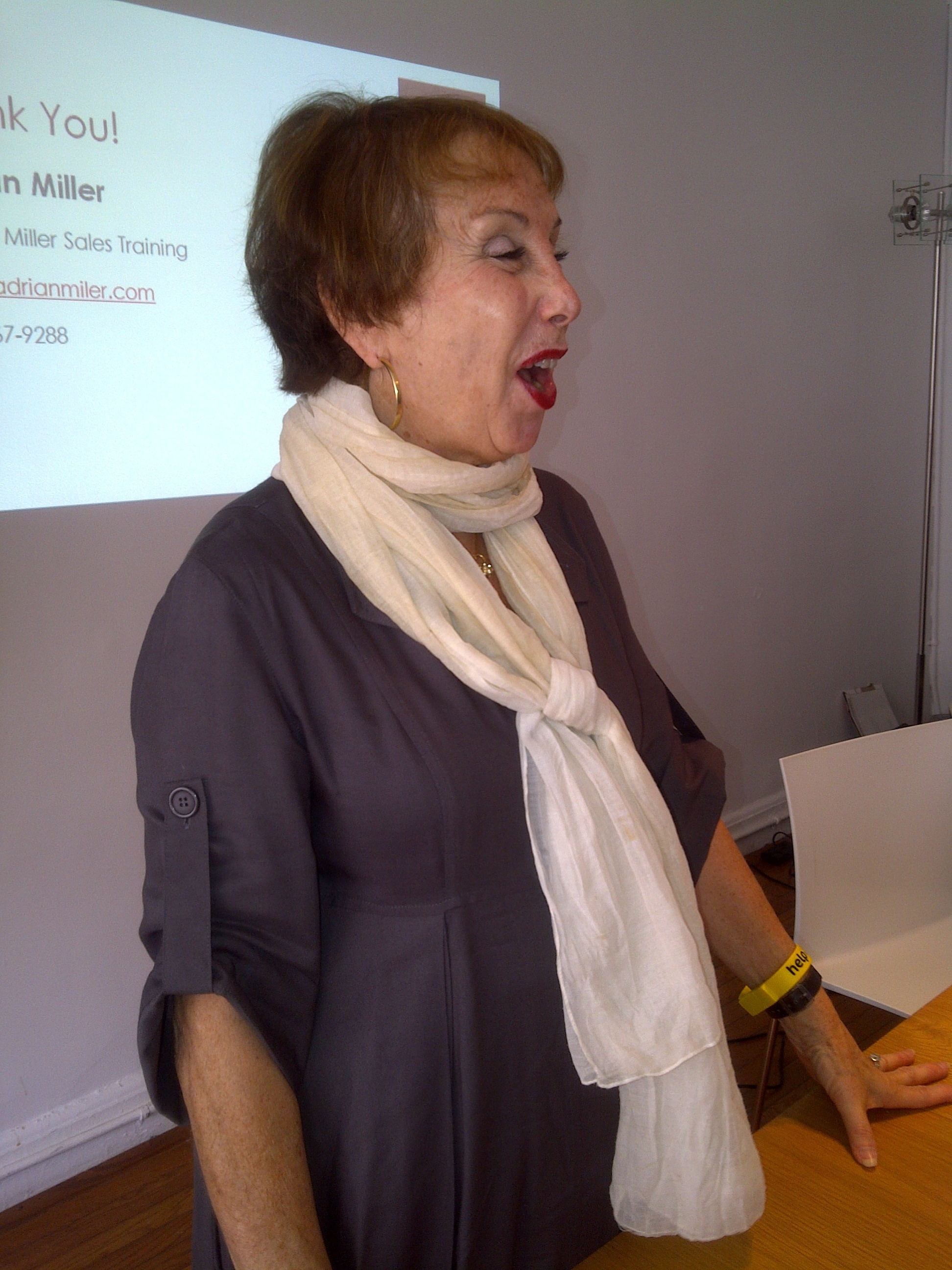 What do today's business presenters have in common with television anchors? They both have broadcasting skills. With youtube being the number two search engine and companies demanding online learning, public speaking has gone digital. According to Business Insider 2014, “About 50 million people in the U.S. now watch video on their mobile phone." Public speakers who shun the camera will be left behind.
The first step to being a master presenter is to understand the difference between in- person speaking versus video presentations. Here are a few tips for speaking in a digital media world:
What do today's business presenters have in common with television anchors? They both have broadcasting skills. With youtube being the number two search engine and companies demanding online learning, public speaking has gone digital. According to Business Insider 2014, “About 50 million people in the U.S. now watch video on their mobile phone." Public speakers who shun the camera will be left behind.
The first step to being a master presenter is to understand the difference between in- person speaking versus video presentations. Here are a few tips for speaking in a digital media world:
- A video recorded presentation is one way communication. That means you can’t read the audience and pivot in the moment to meet their needs. So it takes a lot of preparation to deliver a compelling message and provide value to your target audience.
- In the case of teleconferencing, appoint a facilitator at each site to manage the technology and to facilitate the meeting. Be aware of delay time and plan for it by practicing longer pauses. Pause and silently count to four. That will allow enough time for the speaker to finish and for the listeners to hear the last word.
- Know the time zone of your audience. It may be 8:00 a.m. in New York, but if it’s 2:00 p.m. in Amsterdam you don’t want to start the meeting with “Good morning”.
- Display a visual agenda. People need a roadmap and it will keep the meeting or presentation focused.
- Have a back-up plan. Be able to continue by telephone if the video fails. It’s a good idea to do a test drive of the technology 15 minutes before the presentation. As a hedge, send the PowerPoint deck in advance.
- Make love to the lens. People don’t know where to look when speaking on skype. When you look directly at the caller, they see you looking down and you lose that eye connection. Try this instead: When speaking to them, look directly at the webcam. When you are listening, look at the caller.It’s uncomfortable speaking to a camera; yet that’s exactly what the presenter needs to do during webcasts and media interviews. In live presentations the presenter feeds off the audience reaction. With video, the presenter imagines the lens is a person. It’s important to maintain a steady gaze. If your eyes are darting you’ll be perceived as nervous or untrustworthy. And practice smiling and talking. Broadcasters do this easily. A serious delivery will weaken the likability factor.
- Video is an energy drain. There is an exchange of energy between a speaker and an audience. When that energy is strong, it’s palpable. That’s not the case with video. As a result, you won’t convey energy the way you do in a live performance. For that reason, you need to pump up your performance on video. In a video the presenter can easily come across as flat. Push your energy higher than normal to have the same intensity level when you’re live and in person.
- Minimize gestures. Wide, sweeping hand movements are distracting on video. Use fewer and smaller gestures. If seated, sit with both feet on the floor and lean forward at a 15 degree angle. Place both hands on the table. This is a confident speaking and listening position. You’ll be perceived as confident and it will stabilize you. Avoid excessive head nodding and jerky movements.
- You are always on stage. If someone else is speaking, chances are you are still in view. Be careful about sloppy behaviors such as slouching, looking at your phone, side talking or looking bored. The presentation isn’t over until the camera is off.
- You’ll look heavier on video. Video is two dimensional which flattens the presenter. I once was videotaping a client for a presentation. It was amazing that when I looked at her directly she appeared slim. When I looked through the camera lens she looked heavier.To manage the widening effect, dress for the camera.Remember that light colors enhance and dark colors diminish. A client of mine was unhappy with her video because she thought she looked heavy. She was wearing a boxy white jacket which gave her a wide appearance. We did a make-over. This time she wore a tapered navy blue jacket which had a slimming effect.Another way to look thinner on video is to stand at a ¾ angle with your hips back. If you’re in a close-up, drop your forehead slightly to avoid a double chin.
- Wear the right colors. White and black are not good colors for video. White creates glare. It’s better to wear off-white or pearl grey. Icy pastel colors look washed out on camera and are not a good choice. Red can bleed or look muddy. A better choice is burgundy. Avoid stripes and large bold patterns. You’ll look like a TV test pattern. When in doubt, blue is a good choice for video. It films well and psychologically blue means trustworthy, conservative, stable.
- Lighting is key. While lighting is important in a live performance, harsh lighting won’t be as damaging. On video, fluorescent lightening will highlight lines and shadows in the face and can also hurt the eyes. Use soft lighting that flatters your face.
- Choose the backdrop carefully. When doing a video presentation always ask about the backdrop. If you’re filming from home, make sure you don’t have messy papers stacked up behind you. If you’re filming off-site, choose clothing that will work with the backdrop. Early in my career I was being filmed for a speaker showcase. I asked the producer if my fuchsia suit would televise well. He said yes. Unfortunately. I asked the wrong question. I should have asked “What color is the backdrop?” When I arrived I found myself in front of an orange curtain. The fuchsia suit bled into the orange and looked terrible on film. This wouldn’t have been an issue in a live presentation.
- You cannot be boring. Engagement is crucial.You have 5-10 seconds to grab attention in a video presentation. The key to success in video presentations is good storytelling and a highly targeted audience who will appreciate the value. Being boring is deadly in any venue. A live audience will show more tolerance by listening longer. If your video presentation is boring the viewer will click off instantly. A video presentation needs to have greater engagement. A measure of engagement, is how many people watch the entire video. According to Industry standards, a 15-20% complete viewing of a 2 minute video is considered a good engagement rate. That means most viewers are not watching the complete video.
- The day of the talking head is over.To increase engagement, keep a fast pace. You need to keep the video moving. Add slides and images while you are speaking. Fly in bullet points as you speak. Keep the presentation brief. If it’s a formal speech aim for no more than 18-20 minutes. Sales presentations need to be crisp, engaging, fast moving, and brief.In my own experiment, I noticed that every time I reached for the fast forward knob, the picture would change. This happened continually as if the videographer was reading my mind. Intrigued, I started to look at the time. The frames were changing every four seconds-the same time I wanted to fast forward.
If you’re not producing video presentations you’re leaving money on the table. Your digital footprint is now an important part of your personal brand. Interviewers are asking for videos. LinkedIn now allows videos to be added to profiles. Video is the ultimate selling tool. It addresses the know, like, trust factor.
Video is not going away. To be current, you need to master video presentations.


 September is back to school month. Students first learn the three R's- "Reading, (w)Riting, and 'Rithmetic." But for public speakers and presenters there are actually six R's.
Last weekend I attended a workshop on videomarketing -
September is back to school month. Students first learn the three R's- "Reading, (w)Riting, and 'Rithmetic." But for public speakers and presenters there are actually six R's.
Last weekend I attended a workshop on videomarketing -  Resolve to delete three deadly words from your vocabulary this year. We make resolutions on January 1st and then we go back to our usual habits in less than a month. But you can't afford to let your communication and presentation skills slide. Why? It's a new game. It's tougher, more competitive, and harder than ever to be heard above the noise.
Your speech can undermine your success in an interview, a sales presentation, or a promotion opportunity. And it can sabotage your leadership. Jargon, non-words, and slang will not serve you.
Resolve to delete three deadly words from your vocabulary this year. We make resolutions on January 1st and then we go back to our usual habits in less than a month. But you can't afford to let your communication and presentation skills slide. Why? It's a new game. It's tougher, more competitive, and harder than ever to be heard above the noise.
Your speech can undermine your success in an interview, a sales presentation, or a promotion opportunity. And it can sabotage your leadership. Jargon, non-words, and slang will not serve you.





